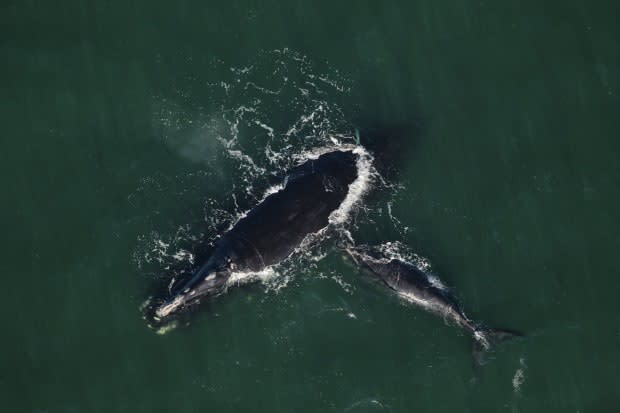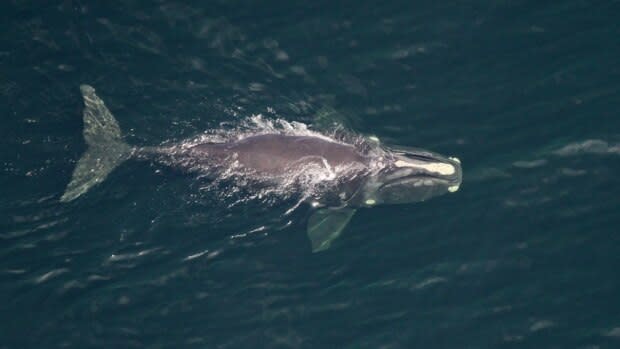Whale researcher hopes West Coast study could help protect North Atlantic right whales
New research that looks at shipping traffic in the Pacific Ocean could help the threatened North Atlantic right whale population on the East Coast.
The research tracked the safest places for ships to travel to avoid the areas where whales tend to form a pod, aiming to protect the species from ship collisions.
The research was led by Jessica Redfern, an ecologist, senior scientist and chair of the Spatial Ecology, Mapping and Assessment Program at the New England Aquarium in Boston.
When she conducted the research, she was working at a scientific institute in San Diego and working alongside shipping companies, the military, ecologists and air pollution regulators.

Her research looked at where and how fast ships are travelling and where whales are congregating.
"I think there is some hope that we can use these tools to understand changes in species locations and numbers as a result of this changing climate," Redfern said.
Redfern and the other scientists she was working with used data from seven specific years between 1991 to 2008.
Through studying those years scientists were able to track changes in shipping traffic, driven by regulations to mitigate air pollution. Scientists could therefore predict where ships were headed.
In addition, scientists also tracked where whale populations were feeding year after year.
Redfern expected whale populations would feed in different areas of the ocean each year. Instead, high numbers of whales were returning to the same foraging grounds.

"I had expected that there would be more change in where they were occurring," Redfern said, "but it was also exciting because it meant that there could be some effective management strategies for protecting whales from being hit by ships."
Protecting whales
There are already measures in place to minimize ship strikes to whales, like speed restrictions and fishing zone closures in eastern Canadian waters. There has also been efforts to alter shipping lanes in the Bay of Fundy to protect whales.
But Redfern said scientists on the East Coast are still trying to understand where whales are occurring and the most effective measures to protect them, especially as the population has been shrinking off the U.S. East Coast.
Right whales have moved north and into the Gulf of St. Lawrence because their food supply, mainly crustaceans, has become abundant in that area since 2010.
Replicating her West Coast study on the East Coast could help forecast whale populations and develop specific restrictions in those areas.
To forecast where whales are congregating, Redfern's study looked at several elements including sea surface temperatures, water depth and salinity.
"We relate those to the number of whales and then use it to try to predict where they are."
Endangered species
North Atlantic right whales are an endangered species with a population hovering around 400 in recent years. There are only about 100 breeding females left.
"That is a really low number. And so that is something that worries me," Redfern said.
"It brings an urgency to this issue."
So far, nine right whales have been spotted during this year's calving season. One was injured by a ship in early January.
Ship strikes and entanglement in fishing gear have been cited as the cause of some right whale deaths in recent years.


